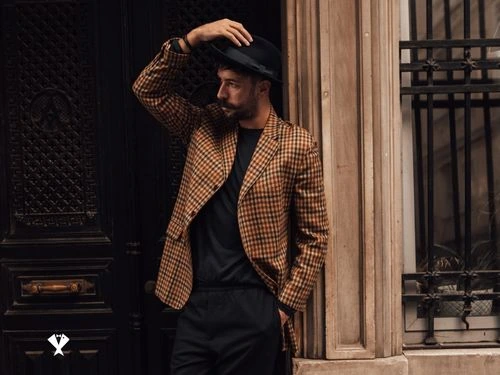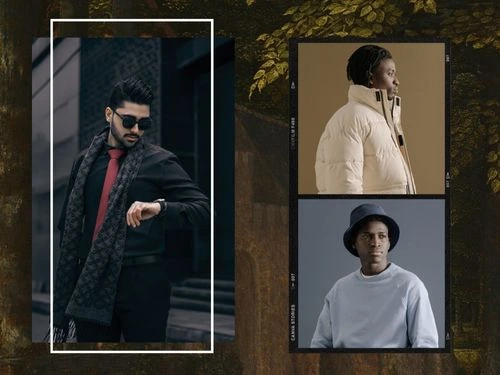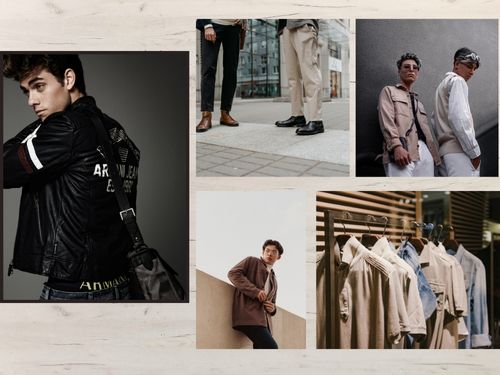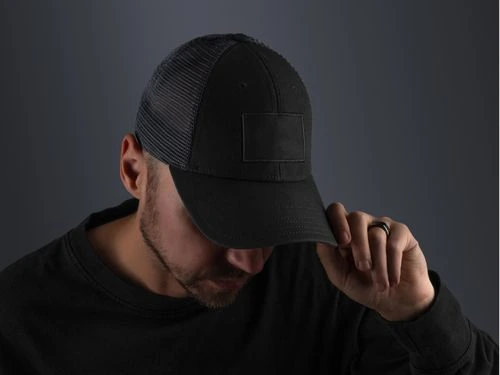Fashion editors set the trends and define style in the industry. They have an eye for what works, a talent for effortless combinations, and a signature look that feels both curated and natural. If you’ve ever wondered how they always look polished without appearing overdone, this guide will show you how to dress like a fashion editor. Achieving this look goes beyond designer labels; it’s a mindset, a set of principles, and a focus on thoughtful details. Here’s how to bring that coveted fashion editor energy into your wardrobe.
Understand the Fashion Editor Mindset
Before diving into specific pieces, it’s essential to understand what dressing like a fashion editor truly means. A fashion editor is confident, deliberate, and creative. Their style communicates authority in fashion without screaming for attention. Think of it as refined individuality. It’s not about following every trend but interpreting trends in ways that suit you.
Fashion editors seamlessly mix high and low fashion. A luxury coat can be paired with thrifted jeans, and a statement handbag might balance an otherwise minimalist outfit. Their look feels personal and intentional, yet unforced. They often experiment with textures, colors, and silhouettes, but they do so in ways that feel thoughtful rather than chaotic. Dressing like a fashion editor starts with cultivating confidence in your own aesthetic.
Chic Ways to Dress Like a Fashion Editor Every Day
1. Master the Art of the Neutral Palette
One key element of fashion editor style is the use of neutral colors. Black, white, beige, navy, gray, and camel are staples in the fashion editor’s wardrobe. These colors create a cohesive, elegant foundation that allows bold accessories or statement pieces to shine.
For example, a fashion editor might pair tailored black trousers with a crisp white blouse and a camel trench coat. The outfit feels polished and professional, yet effortlessly chic. Neutrals also provide versatility. Once you master a base of classic neutrals, layering and mixing textures becomes easier, allowing you to elevate simple pieces with interesting details such as leather finishes, metallic accents, or subtle patterns.
Neutrals are not boring. The key is to play with different shades, fabrics, and silhouettes. A cream cashmere sweater, taupe wool trousers, and soft beige loafers can look more sophisticated than an outfit filled with loud, mismatched colors.
2. Invest in Timeless Pieces
Fashion editors rarely chase fleeting trends. Instead, they invest in timeless, high-quality pieces that form the backbone of their wardrobe. These are items that can be styled season after season and give an air of understated luxury.
Essentials include tailored blazers, classic trench coats, structured handbags, perfectly fitted denim, leather ankle boots, and silk blouses. For instance, a well-tailored blazer instantly elevates a casual outfit, while a structured bag adds sophistication even to the simplest jeans-and-tee look. Quality is key, and fashion editors prioritize materials and craftsmanship over brand names alone.
Timeless pieces provide versatility. A black leather jacket can go from casual daytime wear to evening chic, while a sleek pencil skirt can work in the office or for dinner. Fashion editors build their wardrobes like a toolkit, selecting pieces that can be combined in numerous ways to create polished, professional, and stylish outfits effortlessly.
3. Experiment with Statement Accessories
While their base wardrobe leans toward neutrals and classic pieces, fashion editors know the power of accessories. Statement shoes, bold jewelry, unique handbags, or designer sunglasses can instantly transform an outfit. Accessories let you add personality without overwhelming the overall look.
Consider a minimalist outfit of tailored trousers and a white shirt. Pair it with oversized gold earrings, a patterned scarf, and a pair of bright ankle boots, and suddenly, the outfit becomes editorial-worthy. Fashion editors often mix textures and sizes in accessories to create visual interest. A delicate chain necklace paired with a chunky bracelet, or a structured tote with a casual, oversized scarf, can achieve a sense of effortless layering.
When selecting accessories, choose pieces that feel personal and authentic. This is not about collecting every trendy item, but about curating pieces that enhance your style narrative.
4. Embrace Layering and Texture
Layering is a signature move for fashion editors. They know that mixing textures and layering pieces adds depth and sophistication to any outfit. Leather, silk, wool, denim, and cashmere can coexist in a single look when combined thoughtfully.
For example, imagine pairing a silk blouse with a wool blazer, slim jeans, and leather ankle boots. The mix of textures elevates the outfit, making it feel editorial without appearing contrived. Accessories like scarves, hats, or belts can add an extra dimension, breaking up neutral tones and adding personality.
Fashion editors often experiment with layering different lengths and shapes. A long coat over a cropped sweater or a midi skirt paired with an oversized jacket adds dimension and creates a curated yet relaxed appearance. This approach allows you to adapt your wardrobe across seasons while maintaining an elevated aesthetic.
5. Balance Minimalism and Statement Pieces
The secret to fashion editor style is balance. Outfits often combine minimalist foundations with standout items. Minimalism ensures polish and sophistication, while statement pieces inject creativity and flair.
A classic example is pairing simple black trousers with a bold, patterned blouse. Alternatively, neutral basics can be elevated with a striking designer handbag or an unconventional pair of shoes. The key is moderation. Avoid overloading the outfit with too many statement items, as this can make it feel chaotic rather than curated.
Fashion editors also understand proportion. Pairing oversized and fitted pieces, or structured and flowy garments, keeps the outfit visually interesting. A loose, long coat over a tailored suit, or a cropped jacket over a flowing dress, creates balance while maintaining editorial elegance.
6. Experiment with Trends Thoughtfully
Fashion editors stay aware of trends but approach them with intention. Instead of unthinkingly following every new trend, they interpret trends in ways that align with their personal style. This allows them to stay relevant without losing their signature aesthetic.
For instance, if oversized blazers are trending, a fashion editor might pair one with slim trousers and classic boots rather than a full-on exaggerated ensemble. If neon colors are in, they may introduce a neon accessory rather than wear a head-to-toe bright outfit. This selective experimentation ensures that your wardrobe remains timeless while still feeling current.
7. Nail the Shoes
Shoes are a cornerstone of fashion editor style. They can make or break an outfit, and fashion editors use them strategically. Classics such as leather loafers, pointed pumps, ankle boots, and crisp white sneakers are staples.
Investing in quality shoes is essential. Well-made footwear elevates even the simplest outfit. Fashion editors often have a signature shoe style that they rotate across their looks. For example, a sleek pair of ankle boots can add polish to denim or complement a tailored suit. At the same time, statement heels can turn a minimalist dress into a fashion-forward ensemble.
Comfort is also key. Fashion editors often attend events or work long hours, so they prioritize shoes that look stylish without sacrificing wearability.
8. Pay Attention to Fit
Fit is everything in fashion editor style. Even the most expensive garments will look underwhelming if they do not fit properly. Fashion editors prioritize tailoring, ensuring that clothing drapes perfectly and flatters the body.
A blazer should hug the shoulders, trousers should skim the leg without excess fabric, and dresses should highlight your shape without feeling tight. Knowing your measurements and investing in a good tailor is often more important than spending on high-end brands. Fashion editors understand that precise fit communicates polish and confidence.
9. Cultivate Signature Details
Fashion editors often have subtle signature details that make their style recognizable. This might be a particular accessory, a way of rolling sleeves, a consistent color palette, or a distinctive hairstyle. These signature touches make outfits feel curated and intentional.
For instance, you might always pair a minimalist look with gold jewelry or consistently choose structured handbags over slouchy ones. These small details distinguish your style and create a cohesive wardrobe. Fashion editors often repeat elements in their looks, allowing their personal brand to shine through.
10. Confidence is Key
Ultimately, dressing like a fashion editor is as much about attitude as it is about clothing. Confidence allows you to wear your choices with authority and make intentional style decisions. Fashion editors carry themselves with a sense of self-assuredness that makes even simple outfits feel elevated.
Posture, grooming, and the way you move in your clothing all contribute to the overall impression. When you wear your outfits confidently, others notice your polish and creativity. Confidence transforms even basic pieces into a standout look.
Embrace Your Style with Confidence
Dressing like a fashion editor is about mastering the art of effortless style, balancing classic foundations with statement touches, and cultivating confidence in your own aesthetic. It requires a focus on quality, fit, layering, and thoughtful accessorizing. By investing in timeless pieces, experimenting selectively with trends, and paying attention to details, anyone can channel the chic, editorial-ready look that fashion insiders are known for.
Remember, style is personal. The most compelling fashion editors are those who bring their individuality to every outfit. Use these principles as a guide, but let your personality shine through. Fashion is about self-expression, and when you approach it with intention and confidence, dressing like a fashion editor becomes an achievable and rewarding style goal.




